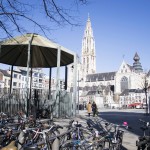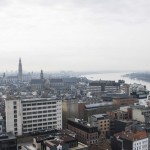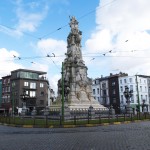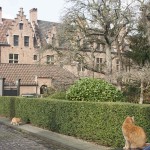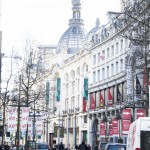Antwerpen, een stad waarvan je zou denken dat iedere inwoner wel gezien wil worden. Als haven- en diamantstad heeft de stad een heel diverse bevolking. Een volk waarvan gezegd wordt dat ze uitgesproken en arrogant zou zijn. De stad telt meer dan vijfhonderdduizend inwoners, wij spraken er vijfendertig van. Wij laten de kwetsbaren aan het woord. Of diegenen die onzichtbaar zijn. Maar niet iedereen in de koekenstad wil in de schijnwerpers geplaatst worden. Wij respecteren hen en brengen hun verhaal anoniem. Zo is Antwerpen onze eerste Invisible City.
Antwerp, a city of which you would think every citizen would like to be seen. As a port town and the world capital of diamonds the city has an immensely diverse population. A population known for its arrogance and outspokenness. The city counts over five hundred thousand inhabitants, of which we interviewed thirty five. We spoke to the marginalized, those who are invisible. But not everyone in the koekenstad (city of cookies) wants to be put in the spotlight. We respect those people and let them tell their stories anonymously. We present to you: Antwerp, the first Invisible City.
Hasselt is de Hoofdstad van de Smaak en bekend als jenever-, mode- en shoppingstad. Een stad die zich laat zien, voelen, ruiken en proeven. Maar je kan er ook op bezoek gaan bij 25 geluksplekken die aangebracht werden door de inwoners van Hasselt zelf. Ze tonen een brede waaier van wat ons in het gewone leven gelukkig maakt. Samen met deze plekken hopen we dat bijgevoegde sterke verhalen, een startpunt zijn om te werken aan je eigen geluk. Verhalen die de veerkracht en weerbaarheid tonen van mensen in moeilijke omstandigheden in Hasselt, de tweede Invisible City.
Hasselt is the Capital of Tastes and well known as a city of jenever (Belgian gin), fashion and shopping. It is a city that allows itself to be seen, sensed, smelled and tasted. But you can visit the 25 places-of-happiness that were created by the citizens of Hasselt. They display a wide array of what makes us happy in our mundane daily lives. In unison with these places and the added impactful stories, we hope to be a pivotal starting point in the journey to create your own happiness. Stories who represent the resilience and tenability of people who live in difficult circumstances in Hasselt, the second Invisible Cities.
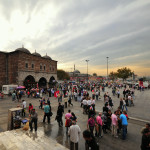
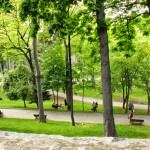
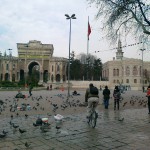

Jeo-politik konumu ile insanlık tarihinde her zaman önemli bir rol oynamış olan İstanbul iki kıta üzerine, Asya ve Avrupa, yerleşmiş dünyadaki tek şehir olma özelliğine sahiptir. 1990’lardan bu yana yılda yaklaşık yüzde 3,5 oranında sürekli büyüyen bir nüfusa sahip bu şehrin göçmenlerinin çoğunu kırsal kesimden gelenler oluşturur. Birçok uygarlığı ve farklı insanı içinde eriten bir pota olarak nam salmış İstanbul, son zamanlarda şehri süpüren’ kentsel dönüşümün ortasında gene de kendini gösteren tarihi anıtları ve şehrin önemli bir simgesi olan İstanbul Boğaz’ı ile eşsiz bir manzaraya sahiptir. İstanbul’un nüfusu 14 milyondan fazladır ve bu şehrin sakinleri kendilerini şehrin gölgelerinin arasından görünür kılmak için şehrin kaotik hızına karşı hayatta kalabilmek için günlük birer mücadele verirler. İşte üçüncü Görünmez Kent görünmez kent, İstanbul ‘un görünmez kıldığı bu insanlardar bazılarının hikayeleri.
Holding always an important role in the history of humanity with its geo-political position, Istanbul is the only city in the world that sits on two continents, Europe and Asia. The city has an ever-growing population at a rate of about 3.5 percent annually since the 1990s with most of the migrants coming from the countryside. Istanbul has the reputation of being the melting pot of many civilizations and different people with a unique landscape where historical monuments and the city’s major landmark, the Bosporus, stand out amidst the urban transformation which has lately been sweeping through the city. Istanbul has a population of over 14 million people and its inhabitants give a daily struggle to survive the chaotic pace of the city as they strive to make themselves seen through the shadows of the city. Here are the stories of some of these people made invisible by Istanbul, the third Invisible City.

